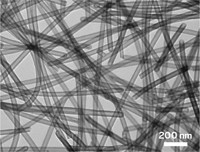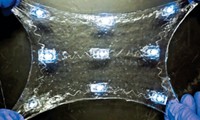Advertisement
Grab your lab coat. Let's get started
Welcome!
Welcome!
Create an account below to get 6 C&EN articles per month, receive newsletters and more - all free.
It seems this is your first time logging in online. Please enter the following information to continue.
As an ACS member you automatically get access to this site. All we need is few more details to create your reading experience.
Not you? Sign in with a different account.
Not you? Sign in with a different account.
ERROR 1
ERROR 1
ERROR 2
ERROR 2
ERROR 2
ERROR 2
ERROR 2
Password and Confirm password must match.
If you have an ACS member number, please enter it here so we can link this account to your membership. (optional)
ERROR 2
ACS values your privacy. By submitting your information, you are gaining access to C&EN and subscribing to our weekly newsletter. We use the information you provide to make your reading experience better, and we will never sell your data to third party members.
Materials
Thin And Flexible Thermotherapy Wrap Built With Nanowires
Nanomaterials: Composite made from silver nanowires and an elastomer is the key component to a sleek device for thermotherapy
by Bethany Halford
June 15, 2015
| A version of this story appeared in
Volume 93, Issue 24
To ease the pain of sore wrists, knees, and other body parts, doctors often recommend applying heat. But heating pads and wraps can be bulky and rigid and don’t always distribute heat evenly. Seeking a better bandage for thermotherapy, a team led by Taeghwan Hyeon and Dae-Hyeong Kim of the Institute for Basic Science and Seoul National University, in South Korea, have created a soft, sleek, and stretchy device that heats evenly while conforming to the body’s contours (ACS Nano 2015, DOI: 10.1021/acsnano.5b02790). The device’s heating element is made from a composite of silver nanowires and a styrene-butadiene-styrene elastomer. Because silver nanowires are better at conducting heat than carbon nanotubes and are less expensive than gold, scientists have recognized them as potential heating elements. But the nanowires are made in aqueous solution, and because of the polar ligands that cling to the wires, they don’t easily blend with the organic elastomers that are needed for flexibility and even heating. Hyeon and Kim’s team solved this problem by developing a ligand-exchange process that makes the nanowires soluble in toluene. A small battery powers the nanowire-elastomer composite heater, making the device portable.





Join the conversation
Contact the reporter
Submit a Letter to the Editor for publication
Engage with us on Twitter